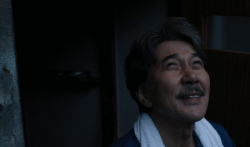Having strolled through a couple rooms of the American Art Museum, I went up to a pair of guards and asked to be pointed to the Modern American Realism exhibit. They eyed me with confusion. As I walked away, I heard one whisper “I’ve never even heard of such a thing.”
This encounter set the tone for my viewing of the exhibit: it turned out that the guards had been standing in the middle of the relatively large exhibit.
As it happens, the guards’ ignorance ended up mimicking the atmosphere of the exhibit. No buzz, no tickets to enter, no signs, the exhibit really felt like it had faded into the background of the museum.
Spacious, with ample room from one cluster of paintings to the next, the collection of art felt disjointed at times. Though the curation was understandable—sketches paired with sketches, oil painting with oil painting, and so on—I would have preferred to see something more substantial pulling the art together.
Realism came into fruition around the mid 19th century with artists like Honoré Daumier and Gustave Courbet—both foreign painters. Consequently, having the focus of the exhibit be on realist painters of the 21st century and of American origin did generate some intrigue.
Some key artists were featured, and with strong pieces. Edward Hopper, most popularly known for Nighthawks, perhaps more than any other American painter, really epitomizes the realist spirit.
Realism is grounded in representing the things around us just as they are. And yet, as we continue to analyze the minutiae of the books we read in class, finding meaning where perhaps no meaning was intended—so do the fans of Hopper’s paintings.
Hopper’s wife even tried to provide a reason for why the woman in Cape Cod Morning (featured in the exhibit) was looking out the window of her home to which Hopper responded that the woman was simply looking out a window—nothing more, nothing less.
Other standout paintings in this exhibit such as Wolf Kahn’s High Summer and Gregory Gillespie’s Green Landscape embody American scene painting, which became a marked subset of realism among 20th century painters, especially in the United States.
Certain pieces even shock and excite. Expect to spend more than a second staring at the sculpture that is Harold Tovish’s In Memoriam or what I like to call Pyramid of Bowling Balls With Skulls Peering Out from Inside of Them. If that alternate title doesn’t inspire intrigue, nothing will.
American Art Museum
8th and F Street N.W.
11:30 a.m. – 7:00 p.m. daily
americanart.si.edu





